#Apple healthkit developers
Explore tagged Tumblr posts
Quote
きょう知ったこと: iOSもAndroidも、こんな情報まで記録していたとは...https://developer.apple.com/documentation/healthkit/hkcategorytypeidentifier/1615769-sexualactivityhttps://developer.android.com/reference/androidx/health/connect/client/records/SexualActivityRecordApple Developer DocumentationsexualActivity | Apple Developer Documentation
新山祐介 (Yusuke Shinyama)
2 notes
·
View notes
Text
IoT Medical Devices Market: The Role of 5G, Blockchain, and Cloud Computing
The global Internet of Things (IoT) medical devices market is experiencing unprecedented growth, driven by technological advancements and an increasing demand for connected healthcare solutions. Valued at USD 41.4 billion in 2023, the market is projected to soar to USD 503.6 billion by 2032, reflecting a compound annual growth rate (CAGR) of 32.0% during the forecast period from 2024 to 2032.
Market Segmentation
The IoT medical devices market is segmented based on components, technology, application, end-use, and regions:
By Component:
Medical Devices
System and Software
Services
By Technology:
Cellular
Wi-Fi
Bluetooth
Low Power Wide Area Networks (LPWANs)
Zigbee
Radio Frequency Identification (RFID)
By Application:
Remote Patient Monitoring
Clinical Operations and Workflow Optimization
Connected Imaging
Medication Management
By End-Use:
Hospitals and Clinics
Clinical Research Organizations
Research and Diagnostic Laboratories
Get free sample report @ https://www.snsinsider.com/sample-request/1773
Regional Analysis
North America currently leads the market, attributed to its advanced healthcare infrastructure and rapid adoption of innovative technologies. Europe follows, driven by supportive government initiatives and a growing focus on digital health. The Asia-Pacific region is anticipated to witness the fastest growth, propelled by increasing healthcare investments, rising smartphone penetration, and expanding network coverage in emerging economies.
Key Players
Apple Inc. (HealthKit)
Intel Corporation (Intel Health Application Platform (HAP), Intel Edison)
Senseonics (Eversense CGM)
QUALCOMM Incorporated (2net Platform, Snapdragon Wear)
GE Healthcare (Carestation Insights, Mural Virtual Care Solution)
Medtronic (Guardian Connect System, MiniMed Insulin Pump)
IBM Corporation (IBM Watson Health, IBM Remote Patient Monitoring)
Wipro Ltd (Wipro Assure Health, Connected Devices in Healthcare)
Infosys Limited (Infosys Health Insights Platform)
Microsoft Corporation (Microsoft Azure IoT for Healthcare, Microsoft HealthVault)
Cerner Corporation (HealtheIntent, Cerner CareAware)
SAP SE (SAP Connected Health Platform, SAP Leonardo for Healthcare)
Amazon (AWS IoT for Healthcare, Amazon Halo)
Cisco Systems, Inc. (Cisco Healthcare Network, Cisco Connected Health)
Koninklijke Philips N.V. (Philips HealthSuite, Philips IntelliVue)
Abbott Laboratories (FreeStyle Libre, Confirm Rx)
Proteus Digital Health Inc. (Proteus Discover), and others.
Key Market Drivers
Rising Adoption of Wearable Healthcare Devices: Advancements in artificial intelligence (AI) and sensor technology have led to the proliferation of compact wearable devices, enabling individuals to monitor and manage chronic health conditions effectively. In 2022, global shipments of wearable devices reached an estimated 190.4 million units, underscoring the growing consumer interest in health monitoring technologies.
Impact of COVID-19: The pandemic has accelerated the adoption of IoT technologies in healthcare, with governments worldwide implementing digital health initiatives to enhance patient care and safety. For instance, in February 2022, the Government of India launched projects aimed at improving digital healthcare services, including telemedicine and digital health registries.
Future Outlook
The IoT medical devices market is poised for significant expansion, driven by continuous technological innovations and the increasing integration of IoT solutions in healthcare. The growing prevalence of chronic diseases, an aging global population, and the rising demand for personalized care are expected to further fuel market growth. Additionally, advancements in network infrastructure, such as the rollout of 5G, will enhance the capabilities of IoT medical devices, enabling more efficient and real-time patient monitoring. As data security remains a critical concern, the development of robust cybersecurity measures will be essential to ensure patient privacy and trust in IoT-enabled healthcare systems.
Conclusion
The IoT medical devices market is on a trajectory of rapid growth, transforming healthcare delivery through enhanced connectivity and data-driven insights. Stakeholders across the healthcare ecosystem, including providers, patients, and technology developers, stand to benefit from the advancements in IoT medical devices, leading to improved patient outcomes and more efficient healthcare systems globally.
Contact Us: Jagney Dave - Vice President of Client Engagement Phone: +1-315 636 4242 (US) | +44- 20 3290 5010 (UK)
Other Related Reports:
Pharmacy Benefit Management Market
Behavioral Health Software Market
Precision Medicine Software Market
#IoT Medical Devices Market#IoT Medical Devices Market Share#IoT Medical Devices Market Trends#IoT Medical Devices Market Size
0 notes
Text
Data Science Trends That Will Be Widespread Across Industries
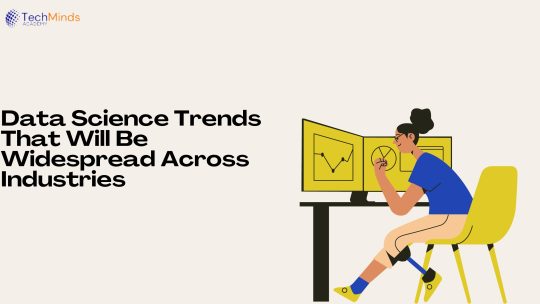
Data science is no longer a niche tool for advanced analytics; it has become the backbone of decision-making, operational efficiency, and innovation across industries. With the rapid expansion of big data, artificial intelligence (AI), and machine learning (ML), industries are harnessing these technologies to transform their operations and provide better services to customers.
As we navigate a data-driven world, understanding the key trends shaping data science across industries is essential. This article explores widespread trends, diving deep into their industry-specific applications in MedTech, insurance, financial services, and more.
The Ubiquity of Data Science
The versatility of data science lies in its ability to address unique challenges across sectors. From automating manual processes to enabling predictive capabilities, data science is transforming how businesses operate. Its adaptability and innovation potential have made it a staple for companies aiming to stay competitive.
Let\u2019s delve into the trends that are set to shape the future of data science across industries.
1. MedTech (Medical Technology)
The medical industry has embraced data science to improve patient outcomes, streamline operations, and enable healthcare innovation. However, MedTech must strike a balance between leveraging technology and preserving the human element of care.
Trends in MedTech:
Data Democratization
Data democratization ensures that both medical and non-medical staff can access and utilize data effectively. Training professionals in technological advancements equips them to make informed decisions, improving patient care.
Example: Philips and Siemens Healthineers use data democratization to enhance diagnostic tools and improve healthcare services. Companies like Tata Consultancy Services (TCS) make healthcare data accessible, enabling medical establishments to integrate technology seamlessly.
Explainable Artificial Intelligence (XAI)
XAI ensures that AI models remain transparent and interpretable. This is critical in MedTech, where AI assists in diagnosis and treatment planning.
Example: IBM Watson Health employs XAI to enhance decision-making processes, ensuring accuracy and reliability in healthcare.
Predictive Analytics
Predictive analytics leverages historical data to anticipate medical outcomes, disease progression, or potential outbreaks. This helps medical professionals allocate resources efficiently and prepare for future challenges.
Example: GE Healthcare uses predictive analytics for early disease detection, helping save lives and reduce costs.
Real-Time Monitoring
Wearable devices and IoT-enabled tools collect real-time health data, allowing continuous monitoring of patients and early detection of anomalies.
Example: Fitbit and Apple HealthKit enable healthcare providers to monitor patient health remotely, fostering proactive care.
2. Insurance
The insurance industry, driven by data science, is focusing on personalized services, fraud detection, and automation to enhance customer experiences and operational efficiency.
Trends in Insurance:
Data Unification
Consolidating data from various sources enables insurers to assess risks more effectively and process claims faster.
Example: Progressive and Allstate use unified data to calculate personalized premiums and improve fraud detection.
Graph Analytics
Graph analytics analyzes relationships between data points, identifying fraud patterns and customer connections. This helps insurers detect fraud and develop customized products.
Example: Financial institutions use graph analytics for risk assessment and fraud detection.
Large Language Models (LLMs)
LLMs like ChatGPT enhance customer service by automating interactions and analyzing customer feedback.
Example: JPMorgan Chase and Bank of America utilize LLMs to streamline customer communication and claims processing.
Risk Modeling
AI-driven risk models enable faster underwriting and more accurate assessments of customer risk profiles.
Example: Zurich Insurance uses AI tools to automate underwriting, improving accuracy and efficiency.
Customer Segmentation
AI-based customer segmentation helps insurers target specific demographics with tailored policies and marketing strategies.
Example: Insurers use segmentation models to offer personalized coverage and pricing.
3. Financial Services
Data science plays a pivotal role in the financial sector, driving innovation in fraud detection, personalized banking, and investment strategies.
Trends in Financial Services:
Data-Driven Consumer Experience
Financial institutions use AI to personalize banking experiences, offering product recommendations and investment advice tailored to individual needs.
Example: Banks like Wells Fargo and Bank of America leverage AI to enhance customer engagement.
Adversarial Machine Learning (AML)
AML focuses on securing machine learning systems against malicious attacks. This is vital for safeguarding customer data and financial transactions.
Example: JPMorgan Chase employs AML to protect its systems from fraud and data breaches.
Data Fabric
A data fabric integrates disparate data sources into a unified platform, enabling real-time insights and better decision-making.
Example: Citibank and HSBC use data fabrics to streamline data management and improve analytics.
Algorithmic Trading
AI and ML optimize trading strategies by analyzing real-time market data and executing trades with precision.
Example: Investment firms leverage algorithmic trading to maximize profitability and reduce human error.
RegTech (Regulatory Technology)
RegTech uses data science to ensure compliance with regulations, reducing risks and simplifying reporting processes.
Example: Compliance.ai assists banks in navigating complex regulatory environments efficiently.
4. Cross-Industry Trends
Beyond industry-specific applications, several overarching trends are shaping the future of data science across sectors:
Generative AI
Generative AI models, such as ChatGPT and DALL\u00b7E, are transforming content creation, process automation, and customer interaction.
Example: Businesses use generative AI to automate routine tasks and enhance customer engagement.
Edge Computing
Edge computing processes data closer to its source, reducing latency and enabling faster analytics for IoT applications.
Example: Manufacturing and logistics industries use edge computing for real-time monitoring and decision-making.
Responsible AI
As AI adoption grows, the emphasis on building ethical, transparent, and unbiased systems is increasing.
Example: Companies are incorporating responsible AI frameworks to foster trust among stakeholders.
Synthetic Data
Synthetic data provides a scalable and privacy-preserving alternative for training machine learning models.
Example: Healthcare and financial services use synthetic data to simulate real-world scenarios without compromising privacy.
Sustainability Analytics
Data science helps industries track carbon footprints and optimize resource usage to meet sustainability goals.
Example: Companies are adopting sustainability analytics to align with environmental regulations and reduce waste.
0 notes
Text
340 - Vision Pro New Video Playback and CES Accessories
The latest In Touch With iOS with Dave he is joined by guest Patrice Brend-Amour, Marty Jencius, Jeff Gamet, and Ben Roethig. We explore the latest updates from Apple's ecosystem Our discussion starts with the Vision Pro and the release of Vision OS 2.3 beta, touching on future HomeKit integrations. We dive into gaming advancements with NVIDIA's GeForce Now for the Vision Pro and discuss video playback options,The conversation shifts to iOS updates, including the minor changes in iOS 18.2.1 and expectations for the iOS 18.3 beta. We share insights from CES, highlighting innovative products.
The show notes are at InTouchwithiOS.com
Direct Link to Audio
Links to our Show
Give us a review on Apple Podcasts! CLICK HERE we would really appreciate it!
Click this link Buy me a Coffee to support the show we would really appreciate it. intouchwithios.com/coffee
Another way to support the show is to become a Patreon member patreon.com/intouchwithios
Website: In Touch With iOS
YouTube Channel
In Touch with iOS Magazine on Flipboard
Facebook Page
BlueSky
Mastodon
X
Instagram
Threads
Spoutible
Summary Topics and Links
We kick off with a discussion about the Vision Pro, as we explore the newly released Vision OS 2.3 beta. While there were not many standout features noted in the update, we tease a potentially exciting future integration with HomeKit, specifically for smart vacuum support. Marty provides insights into developer notes detailing a bug fix for HealthKit authorization issues, while Patrice humorously notes that the updates seem to be more of the same, referencing online jokes about the ongoing nature of software upgrades.
The conversation quickly shifts to gaming enhancements, particularly the anticipation surrounding NVIDIA's GeForce Now service coming to the Vision Pro. Ben passionately shares his excitement, mentioning how it will significantly broaden gaming capabilities through Safari integration. The hosts exchange thoughts on their gaming interests and how these new features may appeal differentially to each of them, highlighting the intersection of gaming and augmented reality.
As we move into the other applications available for Vision Pro, we discuss the best options for video playback, particularly focusing on Plex and the new features recently introduced to its app. The hosts analyze the competitive landscape of video players for Vision Pro, with each providing personal experiences and opinions on usability and functionality. Patrice raises valid points about claiming one specific app holds the ‘best’ title, emphasizing the variety of user needs and preferences.
Next, we turn our attention to recent updates on iOS, with the release of iOS 18.2.1, which introduces bug fixes without significant feature changes. We examine the implications of this update as well as the expectations for future iOS releases, like the upcoming iOS 18.3 beta. The discussion leads to a humorous exchange about the minor changes these updates bring, with the group relaying their own experiences and observations.
The episode pivots to highlight notable mentions from CES. The hosts marvel at new products, such as the Satachi Mac Mini Hub designed to ease the power button's accessibility—a point that ignites playful debate about whether this is necessary. Anchor's new charging solutions and Belkin's innovative accessories also garner attention, with the team weighing in on their utility and relevance in today's tech landscape.
Finally, we wrap up the episode with a look at Apple's recent strategic moves, including the expansion of its services like Apple One and the implications of its ongoing developments in AI with Apple Intelligence.
In Touch With Vision Pro this week.
Apple Seeds Second Betas of watchOS 11.3, tvOS 18.3 and visionOS 2.3 to Developers
Apple Vision Pro to Support NVIDIA's 'GeForce NOW' Cloud Gaming Service via Safari
The best Plex video player for Apple Vision Pro just got way better
This Tim Cook habit can almost fix Vision Pro’s biggest problem
Apple Releases iOS 18.2.1 With Bug Fixes
What to Expect From iOS 18.2.1, iOS 18.3, and iOS 18.4
Beta this week. Apple Releases Second Betas of iOS 18.3 and iPadOS 18.3
Apple Seeds Second Public Betas of iOS 18.3, iPadOS 18.3, and macOS Sequoia 15.3
Apple Seeds Second Betas of watchOS 11.3, tvOS 18.3 and visionOS 2.3 to Developers
iOS 18.3 beta 2 fixes key Calculator issue introduced last fall
In Touch With Mac this week
Apple Seeds Second Beta of macOS Sequoia 15.3 to Developers
Satechi's New Mac Mini Hub Solves the Power Button Problem
Dell mocked at its own press launch for copying Apple's naming convention
Dell Copies iPhone 'Pro', 'Pro Max' Naming Strategy for New PC Lineup - MacRumors
CES
Anker Launches New USB-C Portable Battery and Wall Charger With Smart Displays, Plus More Accessory Deals
Swippitt Debuts Phone Charging Hub With Automated Battery Swapper
LG Unveils UltraFine 6K Display With Thunderbolt 5 Support
This Matter-Enabled Robot Vacuum Can Pick Up Dirty Laundry - MacRumors
CES 2025: Belkin Debuts New Chargers, Audio Products and Content Creation Tools - MacRumors
Apple One got three recent additions you might have missed, here’s what’s new
News
Apple Stepping Up Plans to Expand News App to More Countries - MacRumors
Apple Intelligence Update Will Add Clarification to Prevent Fake Headline Confusion - MacRumors
Apple Says Siri Data Has Never Been Sold or Used for Marketing - MacRumors
Apple Using Shazam to Predict 50 Breakthrough Music Artists This Year - MacRumors
Disney merges Hulu Live TV service with Fubo, new sports bundle now imminent
Announcements
Macstock 9 is next summer. It's back again for 3 Days on July 11, 12, and 13th, 2025. Newsletter link here: https://mailchi.mp/0c81790aa2a8/macstock8-10132503?e=eb0c7039b1
Macstock 8 wrapped up for 2024. But you can purchase the digital pass and still see the great talks we had including Dave talking about Apple Services and more. Content is now available! . Click here for more information: Digital Pass | Macstock Conference & Expo with discounts on previous events.
Our Host
Dave Ginsburg is an IT professional supporting Mac, iOS and Windows users and shares his wealth of knowledge of iPhone, iPad, Apple Watch, Apple TV and related technologies. Visit the YouTube channel https://youtube.com/intouchwithios follow him on Mastadon @daveg65, and the show @intouchwithios
Our Regular Contributors
Jeff Gamet is a podcaster, technology blogger, artist, and author. Previously, he was The Mac Observer’s managing editor, and Smile’s TextExpander Evangelist. You can find him on Mastadon @jgamet as well as Twitter and Instagram as @jgamet His YouTube channel https://youtube.com/jgamet
Marty Jencius, Ph.D., is a professor of counselor education at Kent State University, where he researches, writes, and trains about using technology in teaching and mental health practice. His podcasts include Vision Pro Files, The Tech Savvy Professor and Circular Firing Squad Podcast. Find him at [email protected] https://thepodtalk.net
Ben Roethig Former Associate Editor of GeekBeat.TV and host of the Tech Hangout and Deconstruct with Patrice Mac user since the mid 90s. Tech support specialist. Twitter @benroethig Website: https://roethigtech.blogspot.com
About our Guest
Patrice Brend’amour loves to create podcasts, automations or software. She also enjoys working with diverse sets of people, leading them to success and making a tiny difference in the world. Which she does as VP of Development at a Healthcare Software provider. She can be found at https://the-patrice.com and her podcasts Foodie Flashback at https://foodieflashback.com as well as Retro Rewatch with Jeff at https://RetroRewatch.com
Here is our latest Episode!
0 notes
Text
iOS Frameworks Engineer - HealthKit
“I believe, if you zoom out into the future, and you look back, and you ask the question, ‘What was Apple’s greatest contribution to mankind?’ it will be about health.” -Tim Cook, 2019 We build the engine that powers every health or fitness application from Apple and our third party developers. We hear from our users that we are helping them live better, get stronger, remember to care for…
0 notes
Text
How Is the Population Health Management Market Evolving in 2024? Key Trends and Recent Developments

Introduction:
The Population Health Management Market is undergoing transformative changes in 2024, driven by advancements in technology, shifts in healthcare policy, and emerging trends in patient care. As healthcare systems worldwide adapt to new challenges and opportunities, understanding the latest developments in PHM is crucial for stakeholders aiming to stay ahead in this dynamic sector. This article explores the current state of the PHM market, focusing on recent news and trends that are shaping its evolution.
Download FREE Sample: https://www.nextmsc.com/population-health-management-market/request-sample
1. What Are the Latest Technological Innovations in Population Health Management?
Integration of Artificial Intelligence and Machine Learning
In recent months, the integration of Artificial Intelligence (AI) and Machine Learning (ML) has become a significant trend in the PHM market. These technologies are enhancing predictive analytics and decision-making processes, enabling healthcare providers to identify at-risk populations more accurately and develop personalized care plans.
For example, AI-powered tools are being used to analyze vast amounts of patient data to predict potential health issues before they arise. This proactive approach helps in managing chronic diseases more effectively and reduces the need for reactive treatments. Companies like IBM Watson Health and Google Health are at the forefront of these innovations, continuously improving their AI algorithms to support PHM efforts.
Advances in Remote Patient Monitoring
Remote patient monitoring (RPM) technology is another area experiencing rapid innovation. The latest developments include the use of wearable devices and IoT-enabled health sensors that provide real-time data on patients' vital signs and health metrics. This data is critical for managing chronic conditions and ensuring that patients adhere to their care plans.
Recent partnerships between tech companies and healthcare providers are enhancing RPM capabilities. For instance, Apple’s HealthKit and Fitbit’s health monitoring features are being integrated into PHM systems to offer more comprehensive and continuous patient monitoring.
2. How Are Recent Policy Changes Affecting Population Health Management?
Expansion of Value-Based Care Models
Recent policy shifts towards value-based care are significantly impacting the PHM market. Governments and healthcare payers are increasingly focusing on outcomes-based payment models that reward providers for improving patient health and reducing costs. This transition is driving the adoption of PHM solutions that support these models by providing tools for tracking performance and managing patient populations effectively.
In the United States, the Centers for Medicare & Medicaid Services (CMS) has expanded its value-based care initiatives, such as the Quality Payment Program (QPP) and Accountable Care Organizations (ACOs). These programs incentivize healthcare providers to adopt PHM systems that facilitate care coordination, performance measurement, and patient engagement.
Support for Integrated Care Models
Recent regulations and policies are also promoting the integration of care across different healthcare settings. The push towards integrated care models, such as Patient-Centered Medical Homes (PCMHs) and Integrated Care Networks (ICNs), is driving the need for PHM solutions that can manage complex care needs and ensure seamless coordination among providers.
Government support for these models includes funding for pilot programs and grants for developing integrated care solutions. For example, the Integrated Care for Kids (InCK) initiative in the U.S. provides funding to enhance care coordination and support comprehensive health management for children.
3. What Are the Current Trends in Patient Engagement and Empowerment?
Growing Use of Digital Health Platforms
Patient engagement is a critical component of effective population health management, and recent trends indicate a growing reliance on digital health platforms. These platforms, including patient portals and mobile health apps, are empowering patients to take an active role in managing their health.
Recent developments in digital health platforms include enhanced features for personalized health management, such as tailored care plans, medication reminders, and interactive educational resources. Companies like Teladoc Health and MyChart are leading the way in offering user-friendly platforms that improve patient engagement and adherence to care plans.
Focus on Personalized Health Coaching
Personalized health coaching is gaining traction as a means to enhance patient engagement and support chronic disease management. Health coaches provide individualized guidance and support to help patients achieve their health goals, manage their conditions, and make informed decisions about their care.
Recent innovations in this area include the integration of digital health tools with health coaching services. For example, platforms like Livongo and Noom are combining personalized coaching with data analytics to offer more targeted and effective support to patients.
4. How Are Data Privacy and Security Concerns Being Addressed in Population Health Management?
Strengthening Data Protection Regulations
As PHM systems handle vast amounts of sensitive patient data, data privacy and security have become critical concerns. Recent developments in data protection regulations aim to address these concerns and ensure that patient information is safeguarded.
The implementation of the General Data Protection Regulation (GDPR) in Europe and updates to the Health Insurance Portability and Accountability Act (HIPAA) in the U.S. are examples of regulatory efforts to enhance data protection. These regulations require healthcare organizations to adopt stringent measures for data security, including encryption, access controls, and regular audits.
Adoption of Advanced Cybersecurity Measures
In response to growing cybersecurity threats, healthcare organizations are investing in advanced cybersecurity measures to protect patient data. Recent innovations include the use of blockchain technology for secure data sharing and the deployment of AI-driven security solutions to detect and mitigate potential threats.
Companies like Microsoft and Cisco are providing advanced cybersecurity solutions tailored to the healthcare sector, ensuring that PHM systems are protected against data breaches and cyberattacks.
5. What Are the Emerging Opportunities for Growth in the Population Health Management Market?
Expansion into Emerging Markets
The PHM market is witnessing growth opportunities in emerging markets where healthcare systems are evolving and the demand for advanced health management solutions is increasing. Countries in Asia-Pacific, Latin America, and the Middle East are investing in healthcare infrastructure and adopting PHM systems to improve health outcomes and manage growing populations.
Recent market entries and partnerships by PHM solution providers in these regions are expanding their reach and driving growth. For example, companies like Cerner and Medtronic are establishing a presence in emerging markets to tap into new opportunities and address the unique needs of these regions.
Inquire before buying: https://www.nextmsc.com/population-health-management-market/inquire-before-buying
Development of Innovative Business Models
Innovative business models are also contributing to the growth of the PHM market. These models include value-based partnerships, pay-for-performance arrangements, and outcomes-based contracts that align incentives with health management goals.
Recent examples include collaborations between healthcare providers and technology companies to develop new PHM solutions and business models that enhance care delivery and patient outcomes. These partnerships are driving innovation and expanding the capabilities of PHM systems.
Conclusion
The Population Health Management market is evolving rapidly in 2024, driven by technological advancements, policy changes, and emerging trends. Innovations in AI, remote patient monitoring, and digital health platforms are transforming how healthcare providers manage patient populations and deliver care. Policy shifts towards value-based care and integrated care models are shaping the adoption of PHM solutions, while data privacy and security concerns are being addressed through strengthened regulations and advanced cybersecurity measures.
As the PHM market continues to grow, opportunities in emerging markets and innovative business models will play a crucial role in shaping its future. Staying informed about these developments will be key for stakeholders looking to navigate the dynamic landscape of population health management and achieve success in the evolving healthcare environment.
0 notes
Text
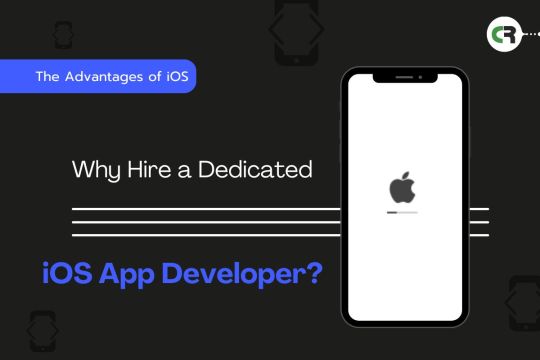
The Advantages of IOS Development
IOS development offers numerous advantages that can significantly benefit developers and businesses alike. With its high-quality user experience, robust security features, and stable ecosystem, iOS provides a solid foundation for creating premium applications. The platform’s strong monetization potential, regular updates, and seamless integration with Apple’s wide range of devices ensure that apps can reach a dedicated and loyal user base effectively.
Moreover, the comprehensive set of development tools and stringent App Store quality control help maintain high standards, resulting in reliable and high-performing applications. Leveraging Apple’s innovative technologies allows developers to stay at the forefront of app development, offering unique and advanced features to users.
Premium User Base: IOS users, known for early adoption and higher spending in app stores, offer a significant advantage for apps targeting a specific, high-value audience.
Focus on User Experience: Apple’s rigorous App Store guidelines uphold high design and user experience standards for iOS apps, resulting in a polished, user-friendly experience for your app users.
Security & Performance: Apple’s focus on security and performance in the iOS ecosystem ensures your app runs smoothly and securely on iPhones and iPads, providing peace of mind.
Integrated Development Environment (IDE): Xcode, Apple’s IDE, offers a streamlined development experience with built-in tools and features specifically designed for iOS development
Swift Programming Language: Swift, the main language for iOS development, is praised for its readability, safety features, and modern design, resulting in cleaner code and quicker development.
Navigation of App Store Guidelines: They are familiar with the App Store process well and can help you create an app that meets Apple’s guidelines, ensuring a smooth approval process.
Hardware Optimization: They leverage their understanding of Apple’s hardware to optimize your app for different iPhone and iPad models, ensuring a seamless experience across devices.
Integration with Apple Service: They use Apple services like Apple Pay, HealthKit, and Maps to enhance your app’s functionality and user experience within the Apple ecosystem.
Long-Term Support and Maintenance: A dedicated developer offers continuous support and maintenance for your iOS app, keeping it current with the latest iOS versions and security updates.
Stable Ecosystem: The closed ecosystem ensures compatibility and stability across devices, leading to fewer fragmentation issues than other platforms.
Monetization Potential: iOS users are generally more willing to pay for apps, leading to higher revenue potential for developers.
Regular Updates: Apple provides regular OS updates, ensuring that apps can take advantage of the latest features and improvements.
Integration with Apple Devices: Seamless integration with other Apple products (Mac, iPad, Apple Watch, etc.) enhances the overall user experience.
Developer Tools: Access to a comprehensive set of development tools and resources, including Xcode, Swift, and extensive documentation.
Innovation Opportunities: Developers can leverage Apple’s cutting-edge technologies, such as ARKit for augmented reality and CoreML for machine learning, to create innovative and advanced apps.
In summary, iOS development presents a compelling opportunity for those looking to create high-quality, secure, and innovative apps that can thrive in a competitive market.
Unlock the full potential of iOS development for your business. Our expert team is ready to help you create high-quality, secure, and innovative iOS apps that stand out in the competitive market. Ready to Elevate Your Business with Premium iOS Apps? Schedule a free consultation to discuss your project needs and discover how we can help you achieve your goals.
#ios app development#ios#ios app developers#ios application development#ios app design#app development#app developers#mobile app development#mobile app developer company
0 notes
Text
Apple Watch Case Study
September 9, 2023
By Erin Pilolla
Apple is an international company that is well known not only for its startup story and founder Steve Jobs, but also for its fine-tuned technology which has continued to appeal to a huge variety of markets. In 2015, the company released the Apple Watch. Over a year after the initial release of the Apple watch, the main issue the company faced was declining sales. Getting consumers to adapt to and integrate a new product into their daily life was not working, primarily based on a lack of perceived usefulness from consumers. People did not see the value of or need for the product, or how it could improve certain activities. Apple needed to not only improve sales, but also find a way to make this product something a consumer felt they couldn’t live without.
Apple is best known for its attention to detail in product design, putting elegance and a well curated user experience at the forefront of their product advantages. They are a big company, compared to others in the same markets, and have a lot of momentum. The Apple Watch was a good fit for this company’s health focused image, and the capabilities of its operating systems and design teams were readily available.
With their customer base accrued over decades, they also had to consider new possible markets. Previously, artists and educators used the Apple devices most notably, but with the Apple watch being positioned so clearly as a device that can help improve your health and habits, it was important to also start creating advertisements geared towards athletes such as runners, swimmers, etc.
During promotion and marketing, Apple partnered with Nike and Hermes, a luxury designer. They also further promoted their own family of products by making updates which allowed the Apple Watch to be paired with iPhones and access features such as Apple pay, text messaging, and more. Health focused collaboration with app developers resulted in ventures like HealthKit, ResearchKit, and CareKit.
Even with big company budgets for advertising and collaboration, competitors are still a market factor. Aside from the well-known Windows and Apple feud pertaining mostly to computers, competition for the Apple Watch was different. Their biggest competitor was Android products which utilized Android Wear software, and an early startup called Pebble which used PebbleOS.
The overall climate of the Apple company was also still shaky at this time, which could explain some of the decline in sales and ineffective promotions. Steve Jobs had just passed away, and new CEO Tim Cook was overseeing one of the first major projects they had worked on since then. It would make sense for the company and employees to take a while to find new footing after such a major loss.
Solution:
Two possible solutions to decrease the resistance to innovation Apple was experiencing would both rely on increasing perceptions of value and utility for the new product.
One would have been to try and differentiate more between their smart watch and other brands in early advertising, as Apple has done in the past countless times (Microsoft vs. Apple commercials poking fun at one another and highlighting certain features). This may have helped to reinforce the advantages Apple products have to consumers compared to other brands which may be less expensive but will not offer the same advantages, and ultimately show new customers all the features it has to offer. Doing this may have made the product seem more cutting edge and exclusive.
Another possible solution, and the one that would likely work better, would be to make customers resistant to change from the company more comfortable by marketing the features of the Apple Watch which seem most familiar to people who use Apple products as well as regular watches. For example, people are already used to how a watch face looks and that it tells time, so this obvious feature could have been highlighted to the point of making it seem like not too much of a huge change from a regular watch. Another thing they could have emphasized in early marketing that may have drawn in more customers is how seamlessly the watch can work with the phone they already have (if it is an iPhone). If you are already used to and enjoy using Apple products and cellular phone features, having those in the form of a convenient wristwatch may not sound like a huge change and shows the simplicity in convenience rather than difficulty in making a change.
Overall, the Apple Watch since 2015 has done extremely well, outperforming competitors, and holding high shares of the smart watch market. Every company strives to outperform previous sales, however, so an analysis of marketing choices and company history can always be helpful.
------------------------------------------------------------------------
Sources
Thomke, Stefan and Barbara Feinberg (2012), “Design Thinking and Innovation at Apple,” Harvard Business School Premier Case Collection, 609066-PDF-ENG
Bucic, Tania and Gaganpreet Singh (2020), "Apple Watch: Managing Innovation Resistance," Ivey Publishing, Harvard Business Review.
0 notes
Text
The Role of Big Data in Healthcare: Revolutionizing Diagnosis and Treatment
Big Data has revolutionized the healthcare industry for better diagnostics in the context of comprehensive patient data, disease prevention and telemedicine (in particular when using real-time alerts to help patients manage their own health through apps such as Fitbit’s One Drop or Apple’s HealthKit), integrating medical imaging for a wider diagnosis, creating predictive analytics, reducing fraud and improving data security, and most importantly, increasing patients’ involvement in their own care.
In addition, leveraging big data can allow medical facilities to reduce the number of unnecessary hospitalizations which initially may result in less revenue for the facility but ultimately saves lives and reduces cost for everyone involved. As a result, it allows the industry to move away from the fee-for-service model to a value-based model that can be more easily measured and delivered.
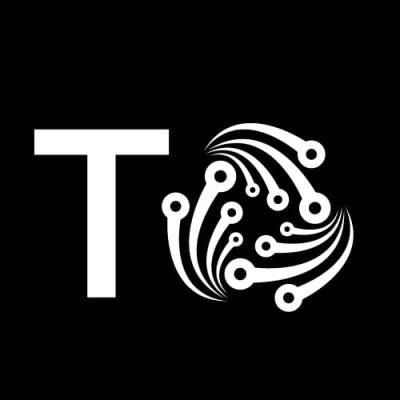
For example, the COVID-19 pandemic was a great challenge to the industry. During this time, hospitals across the country were inundated with patients seeking treatment for a new and dangerous disease. Fortunately, data scientists were able to utilize big data to predict trends in hospital techogle.co admissions and prepare accordingly. This allowed the hospitals to make operational decisions that avoided overcrowding in their emergency rooms and increased their ability to treat patients.
Another use of big data in healthcare is the Cancer Moonshot program, which was launched before President Obama left office with the goal of accomplishing 10 years’ worth of progress toward curing cancer in half that time. To help achieve this, researchers created a database of cancer treatment records from different institutions and combined them with genomic information to identify patterns that could be used to develop more effective drugs. The results of this research were published earlier this year and show that combining molecular data with existing clinical trials will dramatically accelerate the development of new medicines.
Healthcare big data also benefits research by providing access to larger, more varied datasets that can be analyzed with powerful computing power and statistical methods. This has led to more discoveries and breakthroughs, including a cure for HIV/AIDS and improved treatments for cancer.
A desire for personalized care is driving a growing trend towards the use of big data in healthcare to improve patient satisfaction and provide more targeted, relevant marketing. Healthcare big data enables providers to analyze customer and market data to identify best practices, deliver fully-personalized care, reduce costs, and drive growth initiatives.
However, leveraging big technology news data in healthcare can be challenging. For one, it can be difficult to assemble and analyze large volumes of data from multiple sources. Unlike retail and other industries, where data is stored in a single system, healthcare data is often spread across multiple payors, hospitals, administrative offices, government agencies, servers, and file cabinets. The process of aggregating this data requires a lot of work to ensure that it is accurate, complete, and consistent. Moreover, there are privacy and security concerns that must be addressed to prevent unauthorized access. Fortunately, the technology to overcome these challenges is available today and will continue to improve in the future.
1 note
·
View note
Text
Apple has acquired an AI startup.
Apple has recently acquired an AI startup called Xnor.ai. The acquisition is in line with Apple's long-term strategy of expanding its AI capabilities and integrating AI into its products.
Xnor.ai is a Seattle-based startup that specializes in developing AI models that can run on low-power devices, such as smartphones, cameras, and IoT devices. The company's technology enables AI-powered features to work even when the device is offline or has limited connectivity. This acquisition could help Apple improve the performance of its AI-powered features while reducing power consumption.
Apple has been investing heavily in AI technology in recent years, with several acquisitions and partnerships with AI startups. The company's AI efforts are focused on improving existing features, such as Siri and the camera app, as well as developing new products and services that rely on AI.
One of Apple's main goals with AI is to improve the user experience across its products and services. For example, the company is working on developing smarter Siri features that can understand complex commands and provide more personalized responses. Apple is also using AI to improve the camera app and enable features such as facial recognition and augmented reality.
Another area where Apple is investing in AI is health care. The company has developed a health platform called HealthKit, which enables users to track their health data from various sources, such as fitness trackers and medical devices. Apple is also using AI to develop new health-related features, such as detecting irregular heartbeats and monitoring blood sugar levels.
Overall, Apple's acquisition of Xnor.ai is a positive move for the company's AI efforts. By integrating Xnor.ai's technology into its products, Apple could potentially improve the performance of its AI-powered features while reducing power consumption. This could lead to better user experiences and more efficient use of resources.
0 notes
Text
From iPhone to iHealth: How Apple Innovations are Revolutionizing the Healthcare Industry
Introduction
In today's digital age, technological advancements have significantly impacted various industries, and healthcare is no exception. Apple, a company renowned for its groundbreaking innovations, has apple.com made significant strides in revolutionizing the healthcare industry. With the introduction of the iPhone and subsequent technological advancements, Apple has transformed the way healthcare is delivered and accessed. This article explores how Apple's innovations, from the iPhone to iHealth, have reshaped the healthcare landscape.
From iPhone to iHealth: A Game-Changing Evolution The Birth of the iPhone: A Catalyst for Change
The introduction of the iPhone in 2007 marked a turning point in mobile technology. With its sleek design, user-friendly interface, and advanced features, the iPhone quickly gained popularity among consumers worldwide. Little did we know that this revolutionary device would soon find its way into the healthcare industry.
youtube
youtube
Integrating Health Features into iPhones: A New Era Begins
As Apple continued to refine its technology and expand its product line, it recognized the potential for incorporating health features into their devices. With the advent of iOS 8 in 2014, Apple introduced HealthKit, a framework that allows developers to create health and fitness apps that seamlessly integrate with the iPhone.
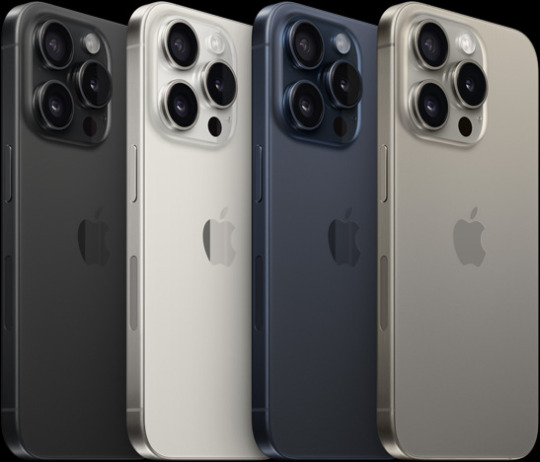
The Power of HealthKit: Empowering Individuals with Health Data
HealthKit serves as a central hub for health data, enabling users to monitor various aspects of their well-being conveniently. Users can track metrics such as heart rate, sleep patterns, steps taken, and even receive personalized wellness recommendations. This feature empowers individuals to take charge of their health and make informed decisions about their lifestyle choices.
youtube
The Emergence of Wearable Technology: Enter Apple Watch
Building upon the success of HealthKit, Apple ventured into wearable technology with the introduction of the Apple Watch in 2015. The Apple Watch integrated health-tracking capabilities, making it a powerful tool for monitoring and improving one's health.
Revolutionary Health Features of the Apple Watch
The Apple Watch boasts an array of health-centric features that have transformed the way individuals interact with their own health data. Some notable features include:
Heart Rate Monitoring: The Apple Watch constantly tracks the user's heart rate, providing valuable insights into cardiovascular health. ECG App: With the release of the Apple Watch Series 4, users gained access to an ECG app capable of detecting irregular heart rhythms. Fall Detection: The Apple Watch can detect falls and automatically initiate emergency calls if necessary, providing peace of mind for users, particularly older adults. Empowering Healthcare Professionals: iPad in Medical Practice
While the iPhone and Apple Watch have played significant roles in consumer healthcare, Apple's innovations extend beyond individual use cases. The iPad has become an invaluable tool for healthcare professionals, revolutionizing medical practice.
Enhancing Efficiency and Accuracy in Healthcare Delivery
The iPad offers healthcare providers a range of applications and tools designed specifically for medical practice. From electronic health record (EHR)
1 note
·
View note
Text
From iPhone to iHealth: How Apple Innovations are Revolutionizing the Healthcare Industry
Introduction
In today's digital age, technological advancements have significantly impacted various industries, and healthcare is no exception. Apple, a company renowned for its groundbreaking innovations, has made significant strides in revolutionizing the healthcare industry. With the introduction of the iPhone and subsequent technological advancements, Apple has transformed the way healthcare is delivered and accessed. This article explores how Apple's innovations, from the iPhone to iHealth, have reshaped the healthcare landscape.
From iPhone to iHealth: A Game-Changing Evolution The Birth of the iPhone: A Catalyst for Change
The introduction of the iPhone in 2007 marked a turning point in mobile technology. With its sleek design, user-friendly interface, and advanced features, the iPhone quickly gained popularity among consumers worldwide. Little did we know that this revolutionary device would soon find its way into the healthcare industry.
Integrating Health Features into iPhones: A New Era Begins
As Apple continued to refine its technology and expand its product line, it recognized the potential for incorporating health features into their devices. With the advent of iOS 8 in 2014, Apple introduced HealthKit, a framework that allows developers to create health and fitness apps that seamlessly integrate with the iPhone.
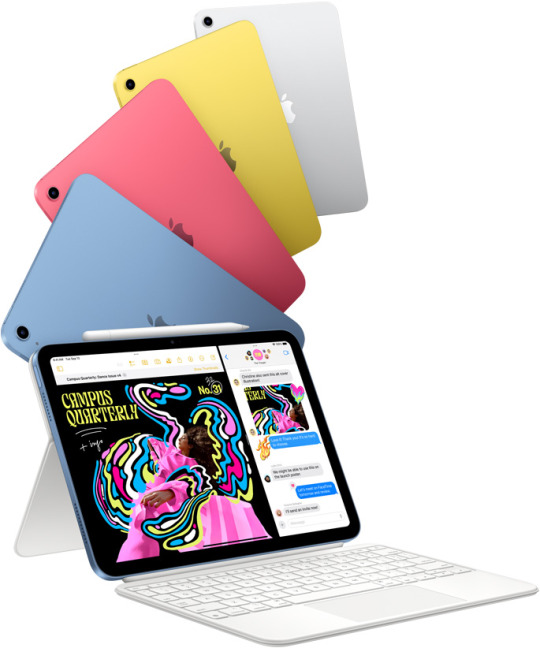
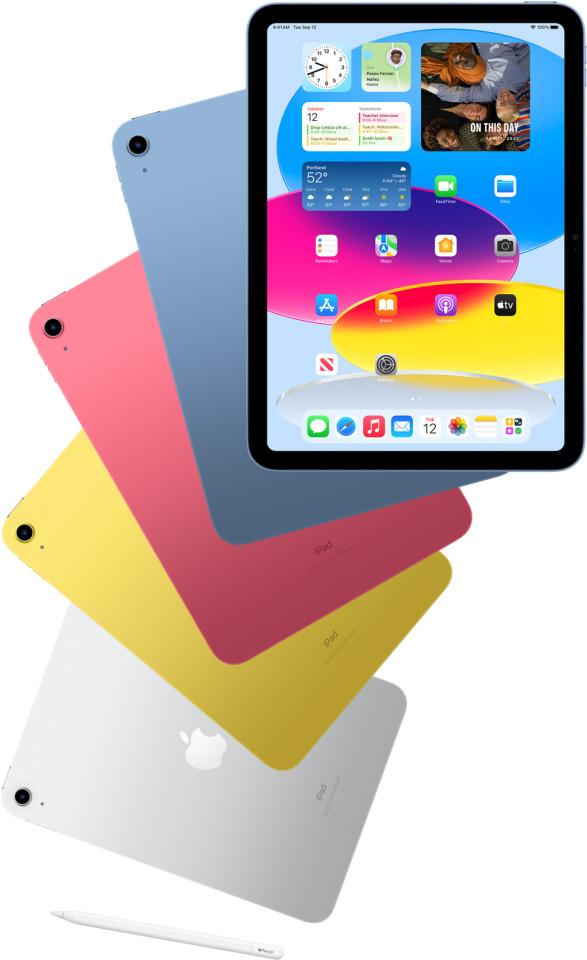
youtube
The Power of HealthKit: Empowering Individuals with Health Data
HealthKit serves as a central hub for health data, enabling users to monitor various aspects Find more information of their well-being conveniently. Users can track metrics such as heart rate, sleep patterns, steps taken, and even receive personalized wellness recommendations. This feature empowers individuals to take charge of their health and make informed decisions about their lifestyle choices.

The Emergence of Wearable Technology: Enter Apple Watch
Building upon the success of HealthKit, Apple ventured into wearable technology with the introduction of the Apple Watch in 2015. The Apple Watch integrated health-tracking capabilities, making it a powerful tool for monitoring and improving one's health.
Revolutionary Health Features of the Apple Watch
The Apple Watch boasts an array of health-centric features that have transformed the way individuals interact with their own health data. Some notable features include:
youtube
Heart Rate Monitoring: The Apple Watch constantly tracks the user's heart rate, providing valuable insights into cardiovascular health. ECG App: With the release of the Apple Watch Series 4, users gained access to an ECG app capable of detecting irregular heart rhythms. Fall Detection: The Apple Watch can detect falls and automatically initiate emergency calls if necessary, providing peace of mind for users, particularly older adults. Empowering Healthcare Professionals: iPad in Medical Practice
While the iPhone and Apple Watch have played significant roles in consumer healthcare, Apple's innovations extend beyond individual use cases. The iPad has become an invaluable tool for healthcare professionals, revolutionizing medical practice.
Enhancing Efficiency and Accuracy in Healthcare Delivery
The iPad offers healthcare providers a range of applications and tools designed specifically for medical practice. From electronic health record (EHR)
1 note
·
View note
Text
React Native vs Swift: Which is Best For Mobile App Development

The world of Mobile App Development knows two prominent names: React Native and Swift. Choosing between them can feel like a strategic decision at a poker table – both hold winning cards, but only one can be your ace in the hole. This blog is your clear-eyed guide to understanding the strengths and weaknesses of each technology, empowering you to pick the perfect one for your app development.
Ready to lend yourself a winning hand? We're diving deep into the core of React Native and Swift, demystifying their capabilities and limitations. Get yourself equipped to make the best decision for your app's future. Let's get started!
React Native
With React Native app development, you can conquer not just one, but two mobile kingdoms – iOS and Android. That's the magic of React Native. This JavaScript-based framework lets React native developers write code once and deploy it on both platforms, saving you time and resources. It acts as an efficient translator, seamlessly converting your code into the native languages of each OS.
Here's where React Native shines:
Rapid development: Code reuse across platforms translates to faster development cycles, letting you launch your app sooner and dominate the market.
Cost-efficiency: Building one codebase for two platforms slashes development costs, making React Native a budget-friendly hero.
Large community: With a vibrant community and extensive documentation, finding help and learning the ropes is a breeze.
Hot reloading: See your changes reflected instantly on the device, making development an iterative dance of refinement.
But even the mightiest warriors have chinks in their armor. React Native's Achilles' heel lies in its reliance on a JavaScript bridge to communicate with native components. This can lead to minor performance hiccups compared to native apps.
Swift: The Native Ninja
Swift, Apple's programming language, is like a ninja, wielding the power of the iOS ecosystem with precision and grace. Crafted specifically for Apple devices, Swift grants your app unparalleled access to the iPhone and iPad's hidden potential.
Swift's strengths lie in its mastery of the Apple domain:
Peak performance: Native code means your app dances with the iOS hardware, delivering lightning-fast responsiveness and silky-smooth animations.
Unmatched features: Embrace the full spectrum of Apple's goodies, from augmented reality to HealthKit integration, to craft truly groundbreaking experiences.
Deep iOS integration: Swift seamlessly blends with other Apple technologies, creating a cohesive and polished app experience.
Future-proof: Apple heavily invests in Swift, ensuring your app stays ahead of the curve and is compatible with the latest devices.
However, like a ninja cloaked in shadows, Swift comes with its own set of challenges. Its learning curve can be steeper than React Native's, and the development process is typically slower due to the need for separate codebases for iOS and Android.
So, who wins the crown?
The answer, dear developer, is not a simple "A or B." The true champion depends on your app's unique needs and goals. Consider these factors to make an informed choice:
Target platforms: If you crave cross-platform dominance, React Native is your weapon. But if iOS is your sole kingdom, Swift reigns supreme.
Performance: For apps demanding pixel-perfect precision and blazing speed, Swift is the undisputed champion. But for most use cases, React Native's near-native performance will suffice.
Development time and cost: If time and budget are tight, React Native's code reuse is a gold mine. However, if you have the resources and desire for peak performance, Swift's native approach might be worth the investment.
Developer expertise: If your team is already familiar with JavaScript and React, React Native is a natural fit. But if you have a team of iOS veterans, Swift might be the language they speak fluently.
Remember, the best technology is the one that serves your app's vision. Don't get caught up in the hype; choose the tool that empowers you to build the app that will conquer the hearts (and smartphones) of your users.
Read More
0 notes
Text
Vyvo Smart Chain Announces NFT Expansion For Apple Watch At Web Summit

An important update to Vyvo Smart Chain's (VSC) patented Data Non-Fungible Token (Data-NFT) has been made available, enabling connection with Apple Watch via the Apple HealthKit. VSC is a HealthFi ecosystem. This update represents a calculated step forward for the HealthFi industry by allowing users of the Apple Watch to actively engage in Data Mining and earn $VSC through the use of a Data-NFT.
VSC announced its expansion during the Web Summit's Growth Startup Program in Lisbon, highlighting its dedication to innovation and upending the health and wellness industry. The Growth Startup Program demonstrates VSC's commitment to developing its ecosystem by giving businesses access to crucial resources and assistance for quick company scaling.
Utilizing human biometrics that are gathered by sensors to create health data from wearable IoT devices is known as data mining on the Vyvo Smart Chain. By decentralizing control over data ownership, privacy, and the capacity to monetize their health data, VSC seeks to empower Data Owners.
Fabio Galdi, Co-Founder and CEO of VSC, highlighted the importance of this technological improvement to the patented Data-NFT and how it places VSC at the forefront of HealthFi. "Our goal has always been to use blockchain to expand the boundaries of technology," he said. This technological advancement for our exclusive Data-NFT opens up our environment to a whole new user base.
Read More - https://bit.ly/47E4ToL
#Vyvo Smart Chain#Health Data Monetization#VSC-Compatible Application (dApp)#Data Non-Fungible Token (Data-NFT)
0 notes
Text

Final Corporate Identity for Jog Scan App
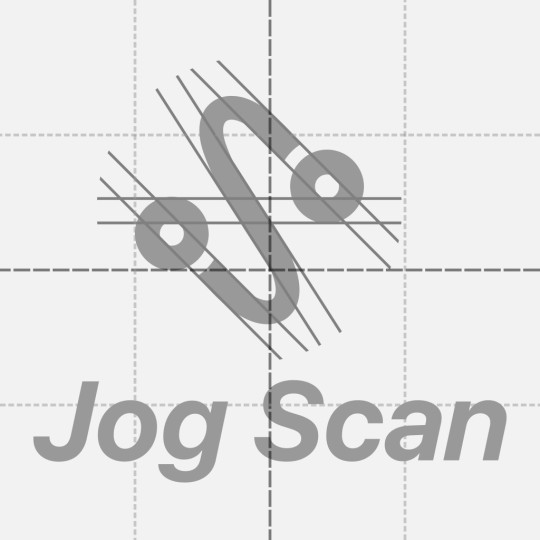
LogoType building grid. Concept: Explosive conection between the movement and information. The arrange in the symbol is dymamic and it vibes in a flowing state, it is off-centered to propiciate the skeweing gained from running. The symbol replicate the letter "S" from "Scan" and resembles a track between one point and another, the sinous shape also represent the Graphs showing realtime data.
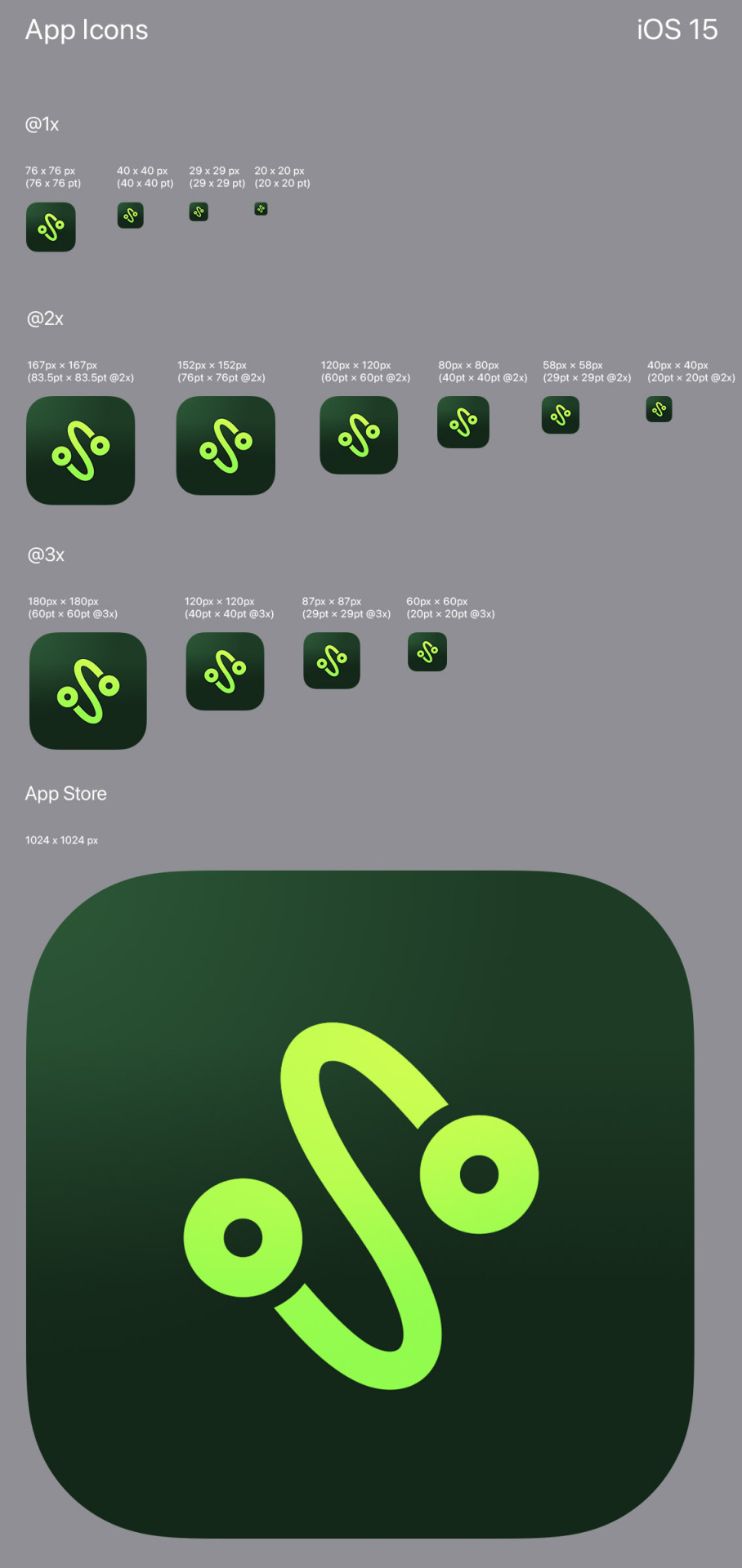
AppleStore Iconography for the App

Some screens from Figma, created to set the visual guidelines and combined with the wireframe propiciate a demo which the developer can understand the navigation Experience and replicate it in Swift.
Check the Demonstration!
About: Jog Scan is an easy tracker for jogging and hydratation in WatchOS, it links with HealthKit from Apple and provide information realtime thru Applewatch and Iphone user.
Developed by Erick Yamato and Cecilia Pesce. 2023
Check the App: https://apple.co/46IS5h1
#figma#design#ui ux#ui ux design#interface#userexperience#watchos#apple watch#interface design#portfolio#jogscan#newapp#apple store
1 note
·
View note
Text
Urutan iOS iPhone
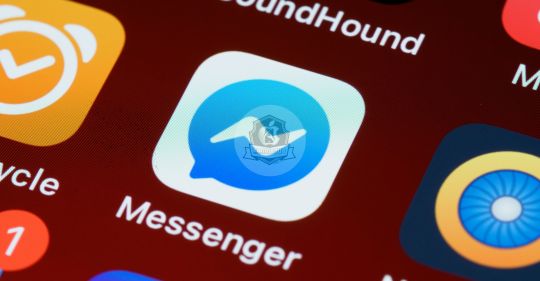

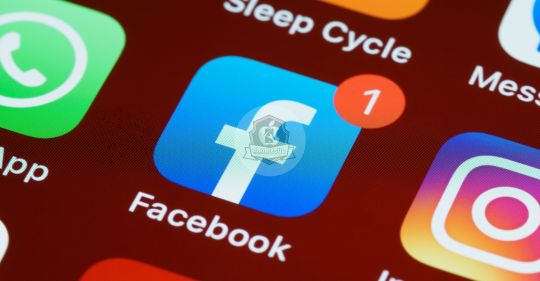
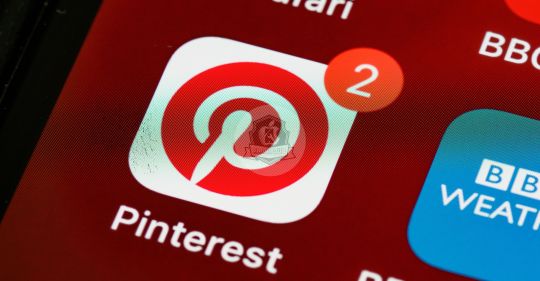

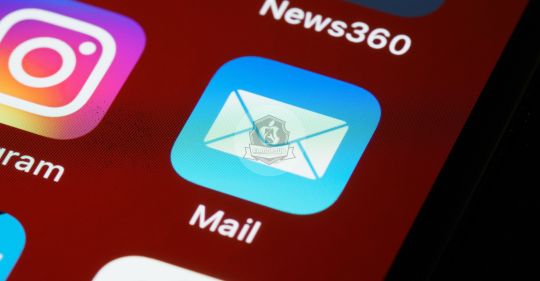
Well! iOS adalah sistem operasi eksklusif untuk perangkat Apple seperti iPhone dan iPad. Ia menawarkan antarmuka pengguna yang intuitif, keamanan yang kuat, dan integrasi yang baik dengan ekosistem Apple.
Berikut ini adalah urutan sistem operasi iOS dari masa ke masa
iPhone OS 1 - Dirilis pada 29 Juni 2007 sebagai sistem operasi pertama yang digunakan oleh iPhone.
iPhone OS 2 - Dirilis pada 11 Juli 2008, membawa fitur baru seperti App Store, dukungan untuk aplikasi pihak ketiga, dan fitur multitasking terbatas.
iPhone OS 3 - Dirilis pada 17 Juni 2009, membawa fitur seperti pembaruan aplikasi secara otomatis, fitur cut, copy, dan paste, serta dukungan push notification.
iOS 4 - Nama iPhone OS diubah menjadi iOS pada 21 Juni 2010. Versi ini membawa fitur seperti folder aplikasi, multitasking yang lebih baik, dukungan FaceTime, serta fitur iBooks.
iOS 5 - Dirilis pada 12 Oktober 2011, membawa fitur seperti notifikasi yang ditingkatkan, integrasi dengan layanan iCloud, Siri (hanya untuk iPhone 4S), dan fitur iMessage.
iOS 6 - Dirilis pada 19 September 2012, membawa fitur seperti integrasi Facebook, Apple Maps, Passbook, serta fitur Siri yang ditingkatkan.
iOS 7 - Dirilis pada 18 September 2013, menghadirkan desain antarmuka yang lebih datar dan bersih, fitur Kontrol Pusat, AirDrop, serta peningkatan kinerja dan stabilitas.
iOS 8 - Dirilis pada 17 September 2014, membawa fitur seperti notifikasi interaktif, Continuity (integrasi antara perangkat Apple), HealthKit, serta fitur perbaikan dan peningkatan.
iOS 9 - Dirilis pada 16 September 2015, membawa fitur seperti Split View, Slide Over, Picture-in-Picture, serta peningkatan kinerja dan efisiensi baterai.
iOS 10 - Dirilis pada 13 September 2016, membawa fitur seperti pengaturan baru untuk Lock Screen, Siri yang lebih cerdas, aplikasi Pesan yang diperbarui, serta perbaikan dan peningkatan lainnya.
iOS 11 - Dirilis pada 19 September 2017, membawa fitur seperti Dock baru untuk iPad, File app, ARKit (platform realitas tertambah), serta peningkatan kinerja dan keamanan.
iOS 12 - Dirilis pada 17 September 2018, membawa fitur seperti perbaikan kinerja pada perangkat lama, Memoji, Screen Time (pengaturan waktu penggunaan), serta fitur-fitur kecil lainnya.
iOS 13 - Dirilis pada 19 September 2019, membawa fitur seperti tampilan gelap (Dark Mode), perbaikan pada aplikasi Foto, pembaruan pada aplikasi Peta, serta peningkatan privasi dan keamanan.
iOS 14 - Dirilis pada 16 September 2020, membawa fitur seperti App Library, Widget yang dapat disesuaikan, fitur Picture-in-Picture yang lebih fleksibel, serta perbaikan pada Siri dan pesan.
iOS 15 - Dirilis pada 20 September 2021, membawa fitur seperti Focus mode, penerjemah bahasa bawaan, perbaikan pada FaceTime, perbaikan pada Notifikasi, serta peningkatan privasi.
iOS 16 - Apple merilis iOS 16 pada September 2022 dan sejak itu telah merilis beberapa pembaruan tindak lanjut untuk mengatasi bug dan menyediakan tambalan keamanan.
iOS 17 - iOS 17 beta pertama akan tersedia untuk Developer Preview pada selasa, 6 Juni 2023. Kemudian pembaruan perangkat lunak final yakni September 2023 tahun ini.
Urutan ini mencakup rilis utama dari iOS, dan ada juga pembaruan dan versi sub yang dirilis di antara versi utama ini. Setiap versi membawa peningkatan, fitur baru, dan perbaikan untuk memberikan pengalaman pengguna yang lebih baik.
Selain iOS, ada juga sistem operasi ponsel lain seperti Android, Windows Phone, dan KaiOS, yang digunakan oleh berbagai produsen ponsel. Pilihan sistem operasi ponsel tergantung pada preferensi dan kebutuhan individu. See you!
Source: https://www.elmobsub.com/2023/06/sistem-operasi-iphone.html
0 notes